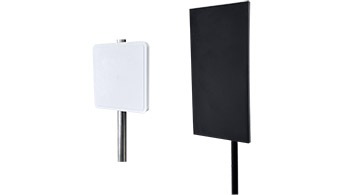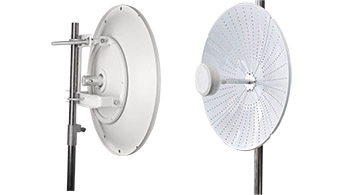Wide Beamwidth vs. Narrow Beamwidth RFID Antenna

A wide beamwidth RFID antenna casts a broad, floodlight-like signal, ideal for covering large areas. A narrow beamwidth antenna creates a focused, spotlight-like signal for long-distance, targeted reads. The choice depends on your specific application’s coverage and range needs.
Solid vs 4-part Pizza Reflector For the Parabolic Dish Antenna

A solid reflector is a single, continuous dish offering maximum durability and the most efficient signal reflection, making it ideal for harsh conditions or when peak performance is critical. A 4-part pizza reflector is lighter, easier to transport, and often cheaper, but the seams can be a minor weak point for durability and signal perfection.
2025 Ultimate Guide to RFID Antennas

Hey there! Let’s talk about something you probably use daily without even realizing it: RFID. Specifically, I want to dive deep into the unsung hero of any RFID system—the antenna. I’ve spent years working with this tech, and I’m here to give you the ultimate guide to RFID antennas, demystifying the jargon and helping you understand what makes them tick.
An RFID antenna is a critical device that converts a reader’s electrical signal into radio waves to activate and communicate with RFID tags. It’s responsible for both transmitting the energy that powers passive tags and receiving the data they send back, defining the system’s read range and coverage area.
2025 Ultimate Guide to the Coaxial Cable Assembly

In the rapidly evolving landscape of wireless communication, the focus often falls on high-gain antennas, cutting-edge routers, or the latest surveillance cameras. Yet, tucked quietly between these devices and their antennas is a small but crucial component that can make or break your system’s performance: the coaxial cable assembly, commonly known as the pigtail. This humble assembly acts as the physical bridge, ensuring seamless and efficient transmission of high-frequency signals between antennas and various communication equipment—routers, wireless access points (APs), customer premises equipment (CPE), RFID readers, and even CCTV systems.
2025 Ultimate Guide to Antenna Connectors

The right antenna connector is crucial for a clear signal. The most common types include the screw-on F-type for TVs, the versatile BNC for radio and video, the compact SMA for Wi-Fi and GPS, and the robust N-type for high-performance and outdoor systems. For cellular DAS systems and base stations, the heavy-duty 7/16 DIN and the newer 4.3-10 connectors are widely used. Choosing the correct one ensures a secure, low-loss connection.
The 2025 Ultimate Guide to WiFi 6/6E/7 Antennas

Selecting the right antenna for WiFi 6, 6E, or 7 in 2025 depends on your specific needs. For general home use with WiFi 6 or 6E, a dual-band or tri-band omni-directional antenna with at least 5 dBi of gain is a solid starting point. For the emerging WiFi 7 standard, you’ll want to look for tri-band antennas that are specifically designed to support the 6 GHz band and advanced features like Multi-Link Operation (MLO). If your goal is to cover a large, open area or establish a connection to a distant signal, a directional antenna, such as a sector antenna, will be your best bet. Always ensure that the frequency range of the antenna matches the capabilities of your router, whether it’s 2.4 GHz, 5 GHz, and/or 6 GHz.
